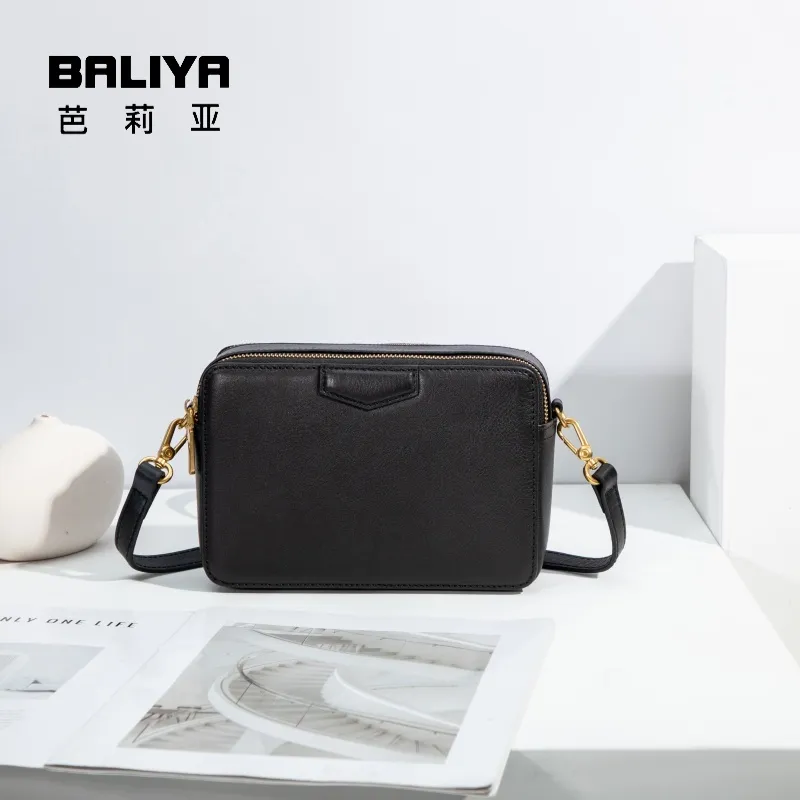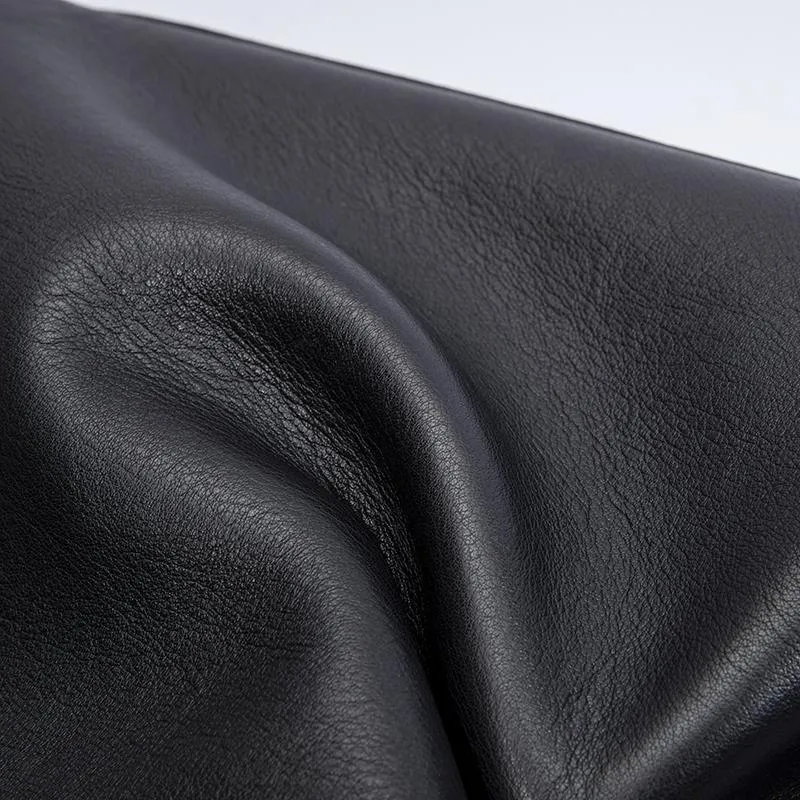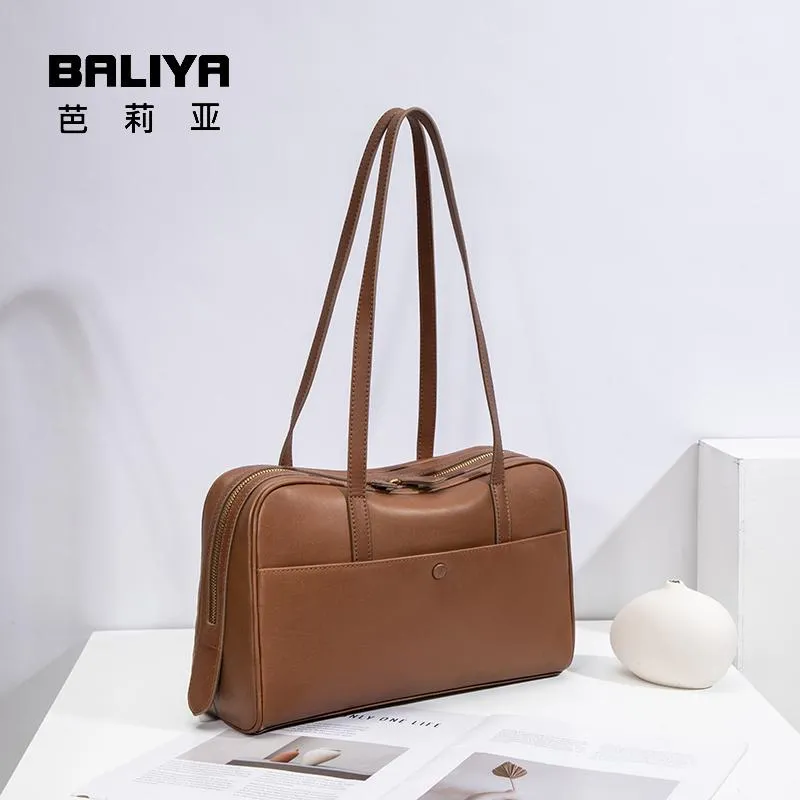When it comes to luxury leather goods, few materials evoke a sense of sophistication and quality quite like Nappa leather. Renowned for its exceptional softness, durability, and fine texture, It has become a hallmark of high-end handbags, wallets, and accessories. But what exactly sets it apart from other types of genuine leather? In this comprehensive guide, we’ll explore the unique characteristics of Nappa leather, its origins, and why it remains a top choice for discerning consumers and designers alike. Whether you're investing in a new handbag or simply appreciate the artistry behind premium leather products, understanding this material will help you make informed decisions and appreciate the craftsmanship behind your favorite items.
Nappa leather originated in the late 19th century, named after the Napa Valley in California where it was first produced. Contrary to popular belief, it is not a specific type of hide but rather a term that describes a particular method of processing leather. Nappa leather is typically made from soft, high-quality hides such as lamb, goat, or calf, which are chrome-tanned and then dyed using aniline or semi-aniline processes. This results in a material that is incredibly supple, lightweight, and smooth to the touch. Unlike heavier, stiffer leathers, Nappa is celebrated for its pliability and luxurious feel, making it ideal for items that require both elegance and comfort, like handbags and clutches.

What is Nappa leather? It’s a common question among leather enthusiasts. The production process begins with selecting premium hides that are free of blemishes. These hides undergo chrome tanning, which ensures flexibility and resistance to moisture. After tanning, the leather is dyed using aniline dyes that penetrate deeply into the material, enhancing its natural grain and giving it a rich, uniform color. The surface is then lightly finished to retain its softness, unlike corrected grains that are heavily coated. This meticulous process preserves the leather’s innate characteristics, resulting in a material that ages beautifully, developing a unique patina over time.

Nappa leather stands out due to its distinct properties. First and foremost, it is exceptionally soft and smooth, often compared to the texture of high-quality suede but with a more refined surface. Its lightweight nature makes it comfortable to carry in handbags, while its durability ensures that products last for years with proper care. Additionally, Nappa leather is highly breathable, which helps prevent moisture buildup and maintains the integrity of the material. These traits make it a favorite among luxury brands for creating items that are both practical and aesthetically pleasing.

While many types of genuine leather exist, Nappa leather is often contrasted with alternatives like full-grain, top-grain, and bonded leather. Full-grain leather, for example, retains the natural imperfections of the hide and is highly durable but can be stiffer than Nappa. Top-grain leather is sanded to remove imperfections, making it softer but less breathable. Bonded leather, on the other hand, is made from leather scraps and lacks the longevity and luxury of Nappa. What sets Nappa apart is its balance of softness, strength, and elegance, making it superior for high-end fashion items where comfort and appearance are paramount.

Opting for a handbag made from Nappa leather offers numerous advantages. Its supple texture molds to the body, providing a comfortable carrying experience without sacrificing style. The material is also resistant to cracking and peeling, thanks to its tanning and dyeing processes, ensuring that your bag remains pristine even with regular use. Moreover, Nappa leather’s ability to hold color vibrantly means that your accessory will look luxurious for years. For those who value sustainability, high-quality Nappa leather is often produced with environmentally conscious methods, adding an ethical dimension to your purchase.

Proper maintenance is crucial to preserving the beauty of Nappa leather. Due to its soft and porous nature, it is more susceptible to stains and scratches than coated leathers. To keep your handbag in optimal condition, avoid exposure to direct sunlight and moisture. Use a soft, dry cloth for regular cleaning and apply a leather conditioner specifically designed for Nappa leather every few months to maintain its suppleness. Store it in a dust bag when not in use to prevent dust accumulation. With careful handling, your Nappa leather bag can become a timeless piece in your collection.

How to identify real leather is a vital skill for any shopper. genuine Nappa leather should feel warm and soft to the touch, with a consistent grain pattern that may include natural imperfections. When pressed lightly, it will wrinkle slightly and then return to its original shape. Fake leather, often made from synthetic materials like polyurethane, tends to feel plastic-like and may have a uniform, artificial pattern. Additionally, genuine leather has a distinct, earthy smell, whereas imitations often emit a chemical odor. Always check product descriptions for terms like "full-grain" or "aniline-dyed" to ensure authenticity.
Nappa leather represents the pinnacle of craftsmanship in the world of genuine leather products. Its unmatched softness, durability, and elegant appearance make it a preferred choice for luxury handbags and accessories. By understanding its unique qualities and learning how to care for it properly, you can invest in pieces that not only elevate your style but also stand the test of time. Whether you’re drawn to its rich history or its practical benefits, Nappa leather continues to symbolize luxury and quality in every stitch. As you explore your next purchase, remember that choosing Nappa leather means embracing a tradition of excellence that transcends trends.